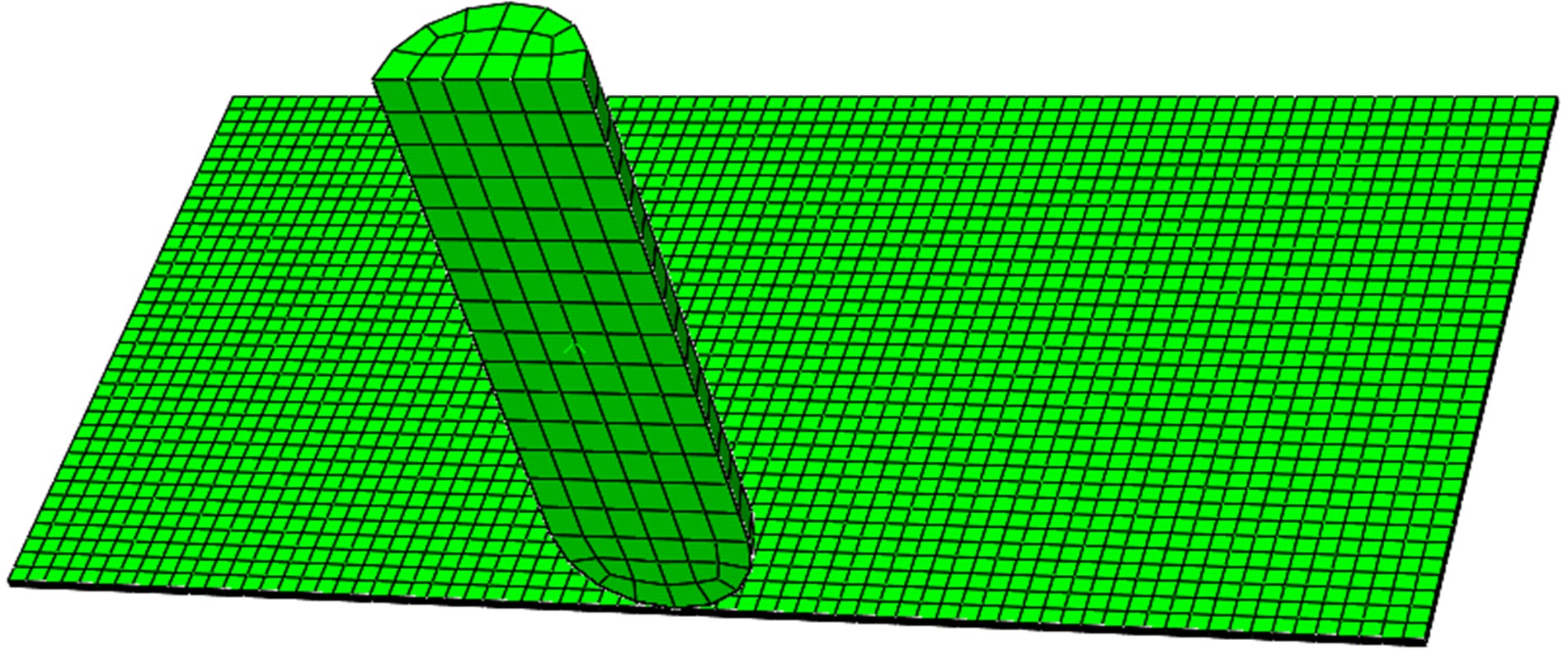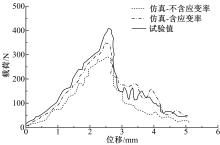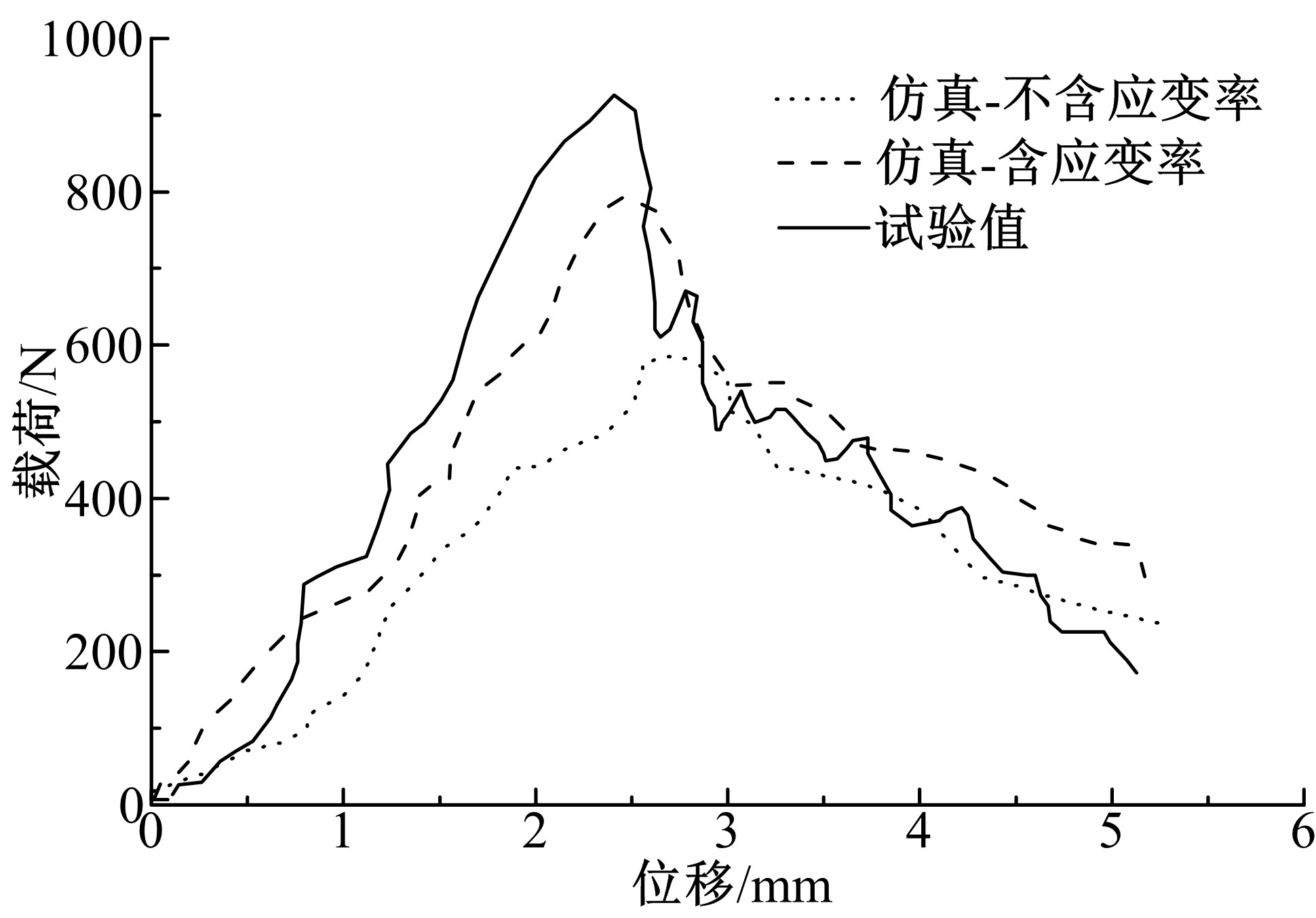Journal of Jilin University(Engineering and Technology Edition) ›› 2019, Vol. 49 ›› Issue (5): 1622-1629.doi: 10.13229/j.cnki.jdxbgxb20180430
Numerical simulation of strain rate effect of fiber reinforced composites
Hui YE( ),Yan-rong ZHU,Yong-feng PU
),Yan-rong ZHU,Yong-feng PU
- State Key Laboratory of Automotive Simulation and Control, Jilin University, Changchun 130022, China
CLC Number:
- U465.6
| 1 | 汤旭, 李征, 孙程阳, 等 . 先进复合材料在航空航天领域的应用[J]. 中国高新技术企业, 2016(13): 39-42. |
| Tang Xu , Li Zheng , Sun Cheng-yang , et al . Application of advanced composite materials in aerospace[J]. China High Technology Enterprises, 2016(13): 39-42. | |
| 2 | Abdul-Latif A , Man M H C , Mansor S . Inclusion of strain-rate effects in low velocity impact simulation of laminated composites[J]. Applied Mechanics & Materials, 2014, 465/466: 1395-1399. |
| 3 | Zhang X , Hao H , Shi Y , et al . Static and dynamic material properties of CFRP/epoxy laminates[J]. Construction & Building Materials, 2016, 114: 638-649. |
| 4 | 辛士红 . 纤维增强树脂基复合材料层合板抗侵彻性能数值模拟研究[D]. 合肥: 中国科学技术大学近代力学系, 2015. |
| Xin Shi-hong . Numerical study on the penetration resistence of fibre reinforced plastic laminates[D]. Hefei: Department of Modern Mechanics, University of Science and Technology of China, 2015. | |
| 5 | Fan J , Guan Z , Cantwell W J . Modeling perforation in glass fiber reinforced composites subjected to low velocity impact loading[J]. Polymer Composites, 2011, 32(9): 1380-1388. |
| 6 | 王正浩, 赵桂平, 马君峰, 等 . 碳/环氧树脂复合材料应变率效应的实验研究[J]. 复合材料学报, 2007, 24(2): 113-119. |
| Wang Zheng-hao , Zhao Gui-ping , Ma Jun-feng , et, al . Experiment study on the strain rate behavior of carbon/epoxy composite materials[J]. Acta Materiae Compositae Sinica, 2007, 24(2): 113-119. | |
| 7 | Gebbeken N , Greulich S . A new material model for SFRC under high dynamic loadings[C]∥International Confernce on Interaction of the Effects of Munitions with Structures, Mannheim, Germany, 2003: 1-16. |
| 8 | Gama B Z , Stanton R J , Gillespie J W . Perforation mechanics of thin composites[C]∥International SAMPE Technical Conference, Long Beach, 2013: 6-9. |
| 9 | 汪凌云 . 论纤维增强复合材料的失效准则[J]. 纤维复合材料, 1995(1): 1-8. |
| Wang Ling-yun . The failure criterion of fiber reinforced composite[J]. Fiber Composites, 1995(1): 1-8. | |
| 10 | Gama B A , Bogetti T A . Progressive damage modeling of plain-weave composites using LS-Dyna composite damage model MAT162[ EB/OL ]. [2009-01-15]. https:∥ |
| 11 | Jordan J B , Naito C J , Haque B Z . Progressive damage modeling of plain weave E-glass/phenolic composites[J]. Composites Part B: Engineering, 2014, 61: 315-323. |
| 12 | Naik N K , Sekher Y C , Meduri S . Damage in woven-fabric composites subjected to low-velocity impact[J]. Composites Science & Technology, 2000, 60(5): 731-744. |
| [1] | LIU Yao-hui, CHEN Qiao-xu, SONG Yu-lai, SHEN Yan-dong. Compressive behavior and mechanism of volcanic ash-SBS, rubber powder-SBS and SBS modified asphalt [J]. 吉林大学学报(工学版), 2017, 47(6): 1861-1867. |
| [2] | YANG Yue-dong, CHEN Ji-qing, LAN Feng-chong, ZHOU Yun-jiao. BIW dynamic characteristics based on spot-welding parameter identification [J]. 吉林大学学报(工学版), 2017, 47(5): 1379-1386. |
| [3] | ZHUANG Wei-min, XIE Dong-xuan, YU Tian-ming, YU Wan-dong. Numerical simulation of hot forming of high-strength steel based on damage-phase transformation constitutive model [J]. 吉林大学学报(工学版), 2015, 45(4): 1206-1212. |
| [4] | YU Xiang-jun . A Study on Determining Linear Expansion Coefficient and Residual Stress of Carbon-Plastic Compound Materials [J]. 吉林大学学报(工学版), 2000, (4): 50-52. |
|
||









